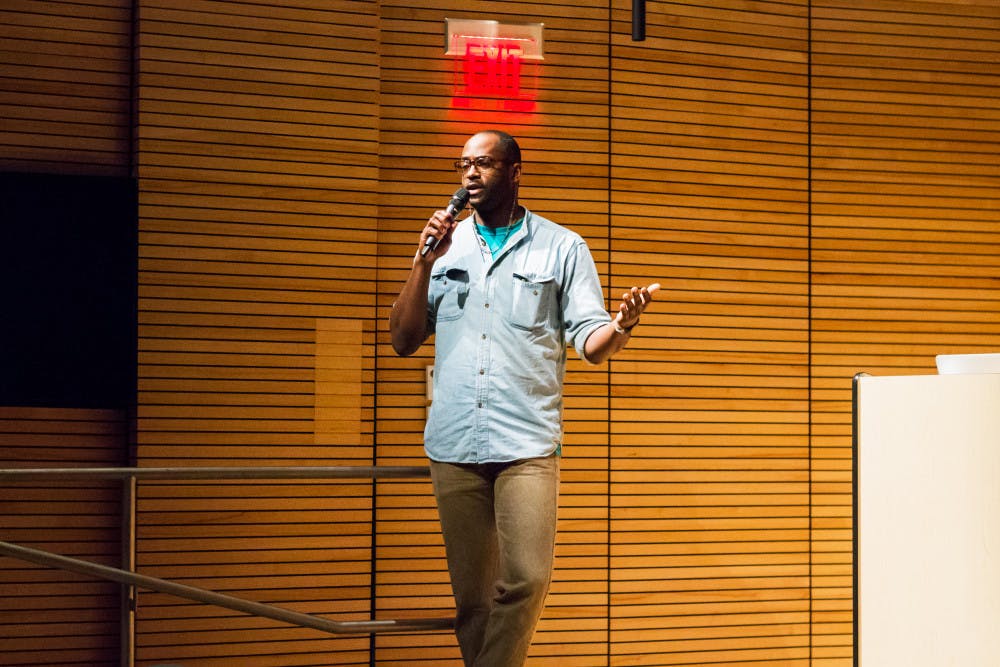RaMell Ross, professor of practice in the visual arts department, gave a talk yesterday at the Granoff Center for the Creative Arts about his exhibition titled “South County, AL.”
Ross’ exhibition “South County, AL” focuses on the black experience in the rural South. Raised in West Virginia, Ross was brought up in a predominantly white culture. When he decided to move to Alabama to work with youth, his social circles advised him not to go, as Alabama and the rest of the deep south was perceived to be an unwelcoming place for an African-American man.
“Everything I’d ever known about the South came from television or from a book,” he said. His first and biggest obstacle when photographing the black community in Greensboro, Alabama was to deconstruct his own preconceived notions of how black people experience life in that region.
When he first tried to photograph his subjects, he did so from the perspective of a northerner capturing “a really small southern town,” Ross said. He did not realize that the work he was producing was a “literal representation of a lot of issues,” he said.
In 2012, Ross began his project photographing South County, Alabama. The difference between this series of photographs and his previous work was that the angle with which he photographed his subjects was executed in a new way. “I had to use an image that forced the viewer to create the narrative of the picture,” Ross said.
Ross would not simply take a picture of one of his students. He would take a picture of her partially obstructed by a bush. In this way, the viewer is not simply seeing her as a black girl from the deep south, but as a subject with a narrative. “You have to create the meaning. And if you create the meaning, then it’s a reflection of you, not her,” Ross said.
“It is really personal and really scary to me that if you take a picture of someone, the only thing you can truly transmit is what the viewer is willing or capable to take in,” he said. In this way, photography is extremely dependent on its viewer, and the artist can only control so much of what their audience takes away from it, he added.
To take pictures of a southern disenfranchised black community, particularly vulnerable to preconceived notions or stereotypes, Ross made an effort to “complicate (his) pictures of black people.” By making his pictures less straightforward, he is making “South County, AL” a reflection of the viewer and the viewer’s gaze rather than a reflection of the subjects themselves.
During his talk, Ross also presented a feature-length film that he directed, shot and edited titled “Idiom (Hale County this Morning, this Evening).” The film attempts to capture the reality of two of his students living in the heart of Greensboro’s African-American community.
“I was struck by the depth and beauty of such highly personalized insight into a group of Alabama youth, and it literally took my breath away,” said Wendy Edwards, department chair of the visual arts department.





